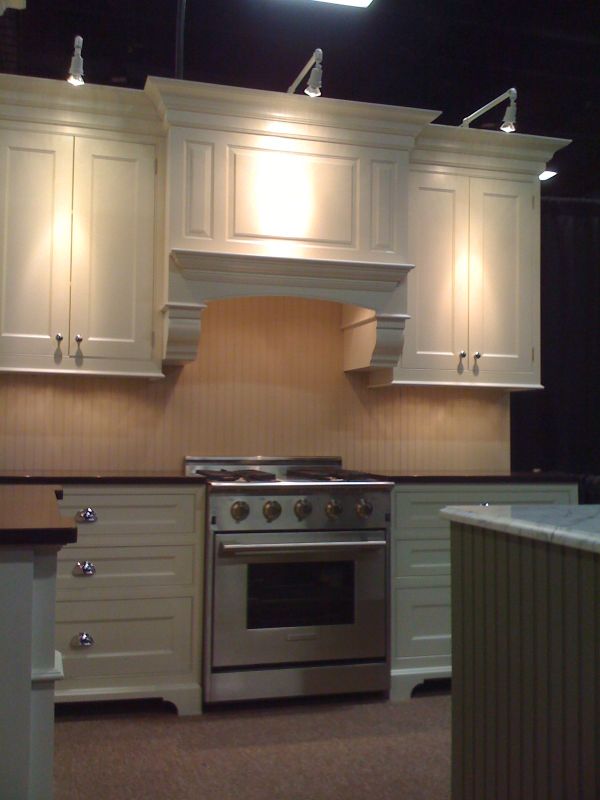Question
I am curious to know how common it is for the small shops to do the actual design for a custom kitchen - layout, cabinetry design, details, molding choices and install - or do you require a plan from a designer? If you do design work, how do you stay on top of the latest trends in kitchen design and cabinetry?
Forum Responses
(Cabinetmaking Forum)
From contributor S:
We always did our own design work for everything we built. You need to read a lot, and just keep your eyes open to see what the current trends are. There is a cabinetmaker in the same building as us and he can build absolutely anything you could imagine. He can not design to save his life. I think you have to have a certain amount of a designer in you. A lot of people have no color sense, for example, which includes the clients.
Half of my family are very good technical artists - pen and ink drawings versus contemporary painting. My bosses were always surprised how I knew what looked correct, long before I could either build it or draw it.
I design about half of what we build. I have built dozens of beaded inset face frame kitchens that were designed by architects or designers. However, when I show my portfolio, the two kitchens that I designed stand out as superior. They have that correct look.
Often, the kitchens designed by architects have no details. Just door/drawer/appliance locations. It is left to us to fill in the appropriate details. Kinda like drawing a box with wheels and calling it a car.

It's funny to me to see things like columns on base cabinets that stop 4" from the floor and other compromised features that are offered by factory box companies (and then emulated by custom shops).
Then there is the process of designing a kitchen or bathroom (not to mention libraries or media rooms) with all components – cabinetry, appliances, lighting and plumbing fixtures, other mechanical systems, counter tops and maybe flooring and color schemes – that all blend together in that harmonious whole that defines great design. There are likely very few career professional cabinetmakers who bring all that to their clients without a good team working behind the scene. For the rest of us, good to better cabinet makers/designers/salesmen who work alone or with a small crew and already have a full time job just building and installing cabinetry, it's common to wear all the hats, including that of researcher and student.
Aside from hitting the historical database, such as the White Pine Series, and subscribing to contemporary magazines, networking with allied professionals is a very useful component towards helping you stay ahead of your competition. Join your local chapter of the NKBA – the National Kitchen & Bath Association. Here is an opportunity to attend regular meetings that combine socializing with people who share your professional interest but from a different perspective and listening to guest lecturers offering all sorts of relevant information. If you are lucky you can develop relationships with Certified Kitchen Designers who, depending on their circumstances or inclination, could be invaluable at collaborating with you in designing projects that require more than just well built cabinets. Of course, attend kitchen and bath shows in your region or the annual National Kitchen & Bath Industry Show to really keep abreast of trends and product.
If you make pieces that are one off and can be sold with no input from a client except that they like it and are willing to pay, then you are sitting pretty. But I don't believe that you can stay in business building cabinetry to fill a kitchen unless you can convey your ideas to your clients and that involves design and some competency at drawing. Yes, it is common for small shops to do design. Not so common to charge for them - that is too often neglected. This diminishes all our capacities to get paid for our efforts. You are in a business that demands a lot from an individual. Do yourself a favor and make some friends that can help you build a virtual big company by virtue of the resource of your network.
To the original questioner: Very nice work.
I don't know how old are you, where your shop is and how much your market can afford. My advice is to assess your capability and your passion. If your passion is in the production, focus on it, ask a designer to work with you on commission. He or she designs and sells the project. In return, give him/her a percentage of sales. Find out your cost and determine your selling price. That way he knows up front how much will it cost. He has the relationship with the client and a feeling of how much they can or are willing to pay. Do not sell based on a high dream. If he did it, he (not you) will lose time or perhaps sales.
If your passion is in design, go for it. Let somebody run the production, and you study deeper into the design. To study design, you have to see a lot. Go to libraries and internet for the particular products. That is how architects learn the shapes, proportions and colors. If you don't like the idea of somebody else running the shop, then buy parts and sell them installed. There are a lot of cabinet parts manufacturers that will be happy to accommodate you. This way you can control the production of the final products.